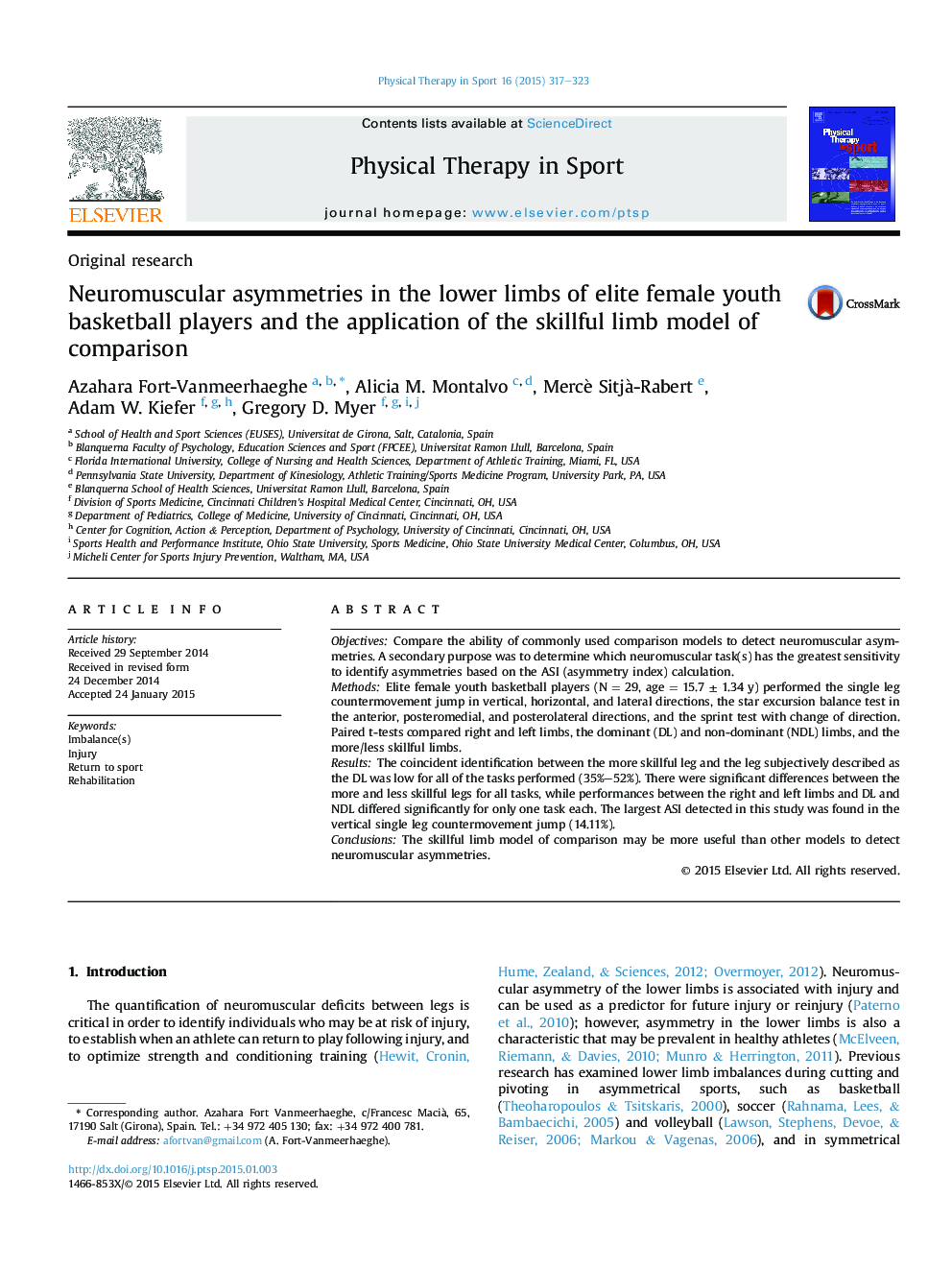| کد مقاله | کد نشریه | سال انتشار | مقاله انگلیسی | نسخه تمام متن |
|---|---|---|---|---|
| 2705751 | 1144772 | 2015 | 7 صفحه PDF | دانلود رایگان |
• The coincident identification between the more skillful and dominant leg was low.
• The more/less skillful comparison model showed more differences than other models.
• Single leg countermovement vertical jump may be the most useful to predict injury.
ObjectivesCompare the ability of commonly used comparison models to detect neuromuscular asymmetries. A secondary purpose was to determine which neuromuscular task(s) has the greatest sensitivity to identify asymmetries based on the ASI (asymmetry index) calculation.MethodsElite female youth basketball players (N = 29, age = 15.7 ± 1.34 y) performed the single leg countermovement jump in vertical, horizontal, and lateral directions, the star excursion balance test in the anterior, posteromedial, and posterolateral directions, and the sprint test with change of direction. Paired t-tests compared right and left limbs, the dominant (DL) and non-dominant (NDL) limbs, and the more/less skillful limbs.ResultsThe coincident identification between the more skillful leg and the leg subjectively described as the DL was low for all of the tasks performed (35%–52%). There were significant differences between the more and less skillful legs for all tasks, while performances between the right and left limbs and DL and NDL differed significantly for only one task each. The largest ASI detected in this study was found in the vertical single leg countermovement jump (14.11%).ConclusionsThe skillful limb model of comparison may be more useful than other models to detect neuromuscular asymmetries.
Journal: Physical Therapy in Sport - Volume 16, Issue 4, November 2015, Pages 317–323
